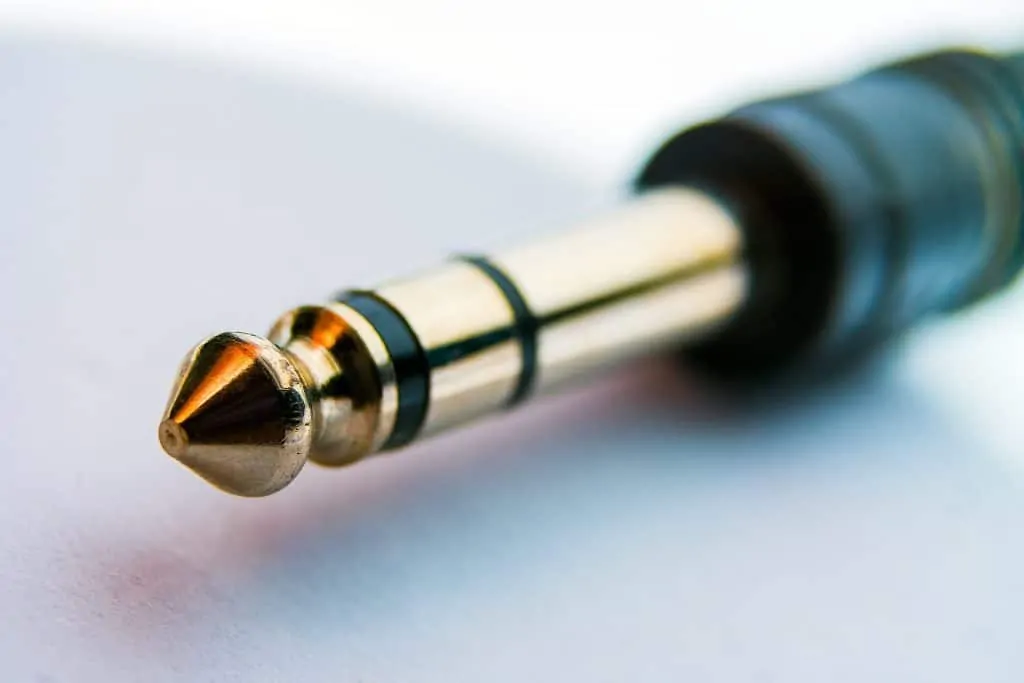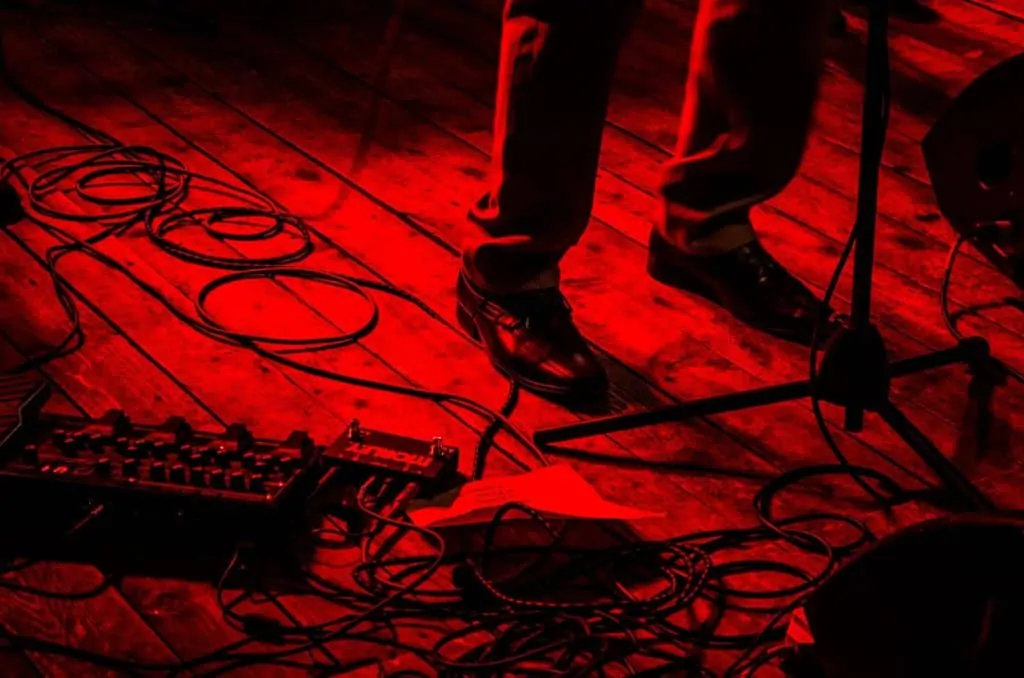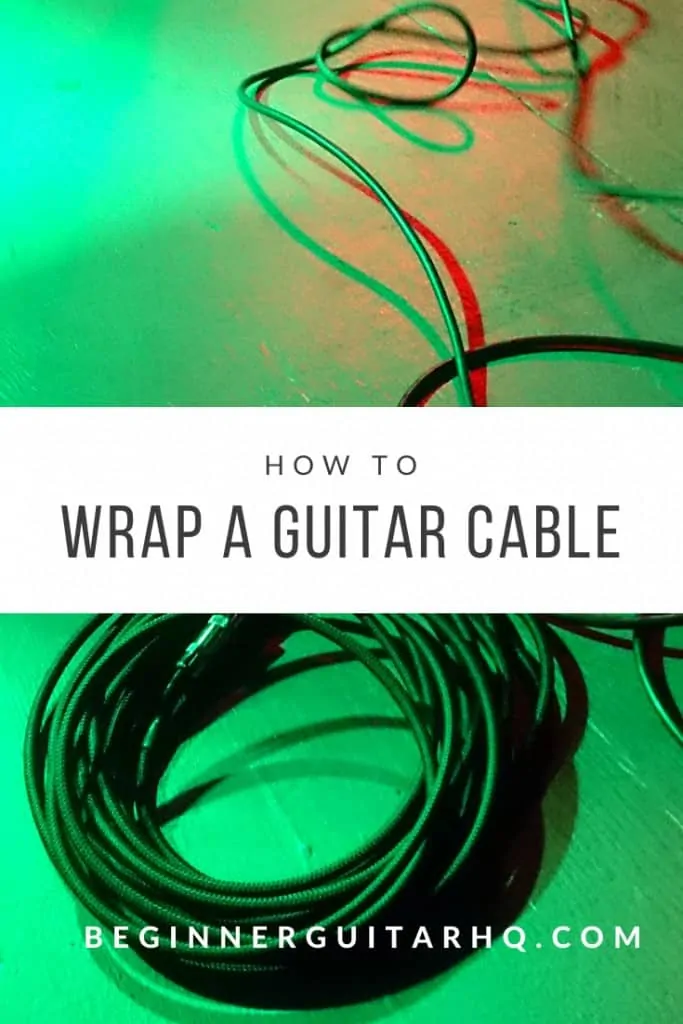Guitar players often neglect cable management. But learning how to wrap and store your cables can lengthen their lifespan and clean up your practice space. If you want to get rid of all those tangled cables strewn around your guitar, this guide will help you do it.
Benefits of Cable Management
Taking the extra time to properly wrap and store can seem like an unnecessary burden. If you’ve just finished a long practice session or walked off the stage at a gig, the last thing you want to do is start wrapping cables!
However, throwing your cables around without wrapping them properly can cause them to fray, split, or short out while you’re playing. Once you find the best cables around, it’s important to take care of them! These techniques to save your cables don’t take any extra time, but will help you preserve your pieces of equipment and keep them performing at their best for longer.
The “roadie wrap” is the best way to keep your cables organized and safe.
Wrapping Your Cables: The “Roadie Wrap”
If you’re like most guitar players, chances are you don’t put much thought into how you wrap up your cables. Unfortunately, poor wrapping techniques abound — some guitarists wrap cables around their arm, while others ball them up or wrap it around their wrist. Over time all of these these strategies can kink the cable and damage the interior.
To keep your cable safe when you wrap it, use the “roadie wrap” technique. This strategy eliminates any kinks along the cable’s length and makes it easy to unroll as well.
How to “Roadie Wrap” Your Cable
The roadie wrap requires just a couple of steps — learn them to protect your cables!
Shake Out the Cable
Before you roll up your cable, shake it out. Check that there aren’t any kinks or twists and make sure that the cable isn’t caught on any other object. If you have the space, lie the cable out flat to provide a neat feed as you begin to twist.
Hold and Twist the Cable
Then, take one end of the cable between your fingers; place your other hand along the cable about one foot down. It doesn’t matter which hand you use for each position — just pick whichever is most comfortable!
Hold your two hands even with each other, about shoulder-width apart. Take your hand that’s along the length of the cable and use your thumb and index finger to twist it away from you. Then, bring your two hands together to form a loop of cable. Tuck the loop into your hand that holds the end of the cable and repeat.
Repeat
Once you’ve got the motion down, you can use this technique to wrap the length of the cable. Just make sure to alternate which way you twist each time — if you twisted away from your body last time, twist towards yourself the next time and vice versa.
To create a loop without kinking the cable, you’ll need to bring your hands together in opposite directions as well. This means that the end of the cable will face towards you after one loop and away from you the next.
Additional Tips
While this might sound a bit complicated, the process is pretty intuitive after a little bit of practice. The cable itself will “guide” you towards the correct motion — trying to loop it the wrong way will build up tension and may cause it to unravel spontaneously.
While it’s not an exact science, holding your hands shoulder-width apart tends to produce the best loop length. Of course, you can adjust the size as you want for larger or smaller coils. Just make sure not to go too small; the tighter loops may place stress on the cable! If you’re in doubt, large loops will keep the cable more relaxed and prevent any tension from building up.
To unravel a cable that’s been roadie wrapped, just grab one end and pull apart the different loops. The cable should come apart on its own, without too much effort. Shake it out before you plug it in to eliminate any stubborn twists.
Coiled Cables
Though it may seem obvious, it’s important to reiterate: don’t try to wrap up a coiled guitar cable! Most coiled cables are fairly short when they’re not extended anyway; using the roadie wrap technique on a coiled cable risks damaging it or destroying the coiled pattern.
To transport a coiled cable, make sure it’s fully rolled up without any kinks or twists. Once you’ve straightened everything out, just arrange the coils into a circle and throw it in your case or bag. As long as you keep it clear of any objects that could catch it and don’t place heavy objects over it, the cable should be fine.
Failing to properly organize your cables can lead to a crowded and messy stage.
Organizing Your Cables
Once you’ve got your cables wrapped up properly, you’ll still need to organize them or they may unravel. You can use a couple different techniques depending on your space and budget.
Velcro Strips
Velcro ties are the quickest way to prevent your cables from coming apart. Just take some mini strips of velcro and fasten them around the coiled cable. Many cables come packaged with some sort of fastener, though you can also find them at guitar or hardware stores.
Hooks
Even if you have enough velcro strips, getting your cables in the air is always a good idea. On the floor, it’s easy to forget where they are — or worse, step on and damage them. A simple set of hooks can keep your cables safe and neatly organized.
To avoid drilling holes in your wall, just find some space on a desk or hang them from a ledge. Even guitar stands can hold your cables in a pinch! If you have enough space, though, it’s a good idea to keep your cables organized by length — you’ll be able to grab the perfect one for every job.
On Stage
When you’re on stage, many of the standard rules about cable management fly out the window. It can be easy to get caught up in the energy and excitement of performing! However, don’t neglect your cables before, during, or after your set.
When you set up your cables, make sure that there aren’t any kinks or twists along their length. You should also try to keep as many of your cables coiled as possible; only unfurl enough length to get between your amp, pedals, and guitar. If you’re looking for recommendations on other gear, check our our articles on the best guitar pedals and the best amps (both tube amps and solid-state models)!
Once you have your setup organized, you can go ahead and play as you normally would! Just make sure to feed your cable through the loop of your guitar strap. This technique keeps the cable off of the floor and prevents you or your bandmates from stepping on it during the heat of the moment.
Stepping on a cable, even by accident, can cause irreparable harm. Depending on your axe, stepping on the connection could tear the jack out entirely, ruining part of the hardware and potentially damaging the electronics of your instrument. With such an easy fix, there’s no excuse not to take proper care of your cables on stage!
Summary
Though cable management is far from the sexiest part of a guitar player’s life, it’s still an important skill to know. Wrap your cables using the roadie wrap technique and keep them out of harm’s way to ensure that they’re always ready when you need them!



